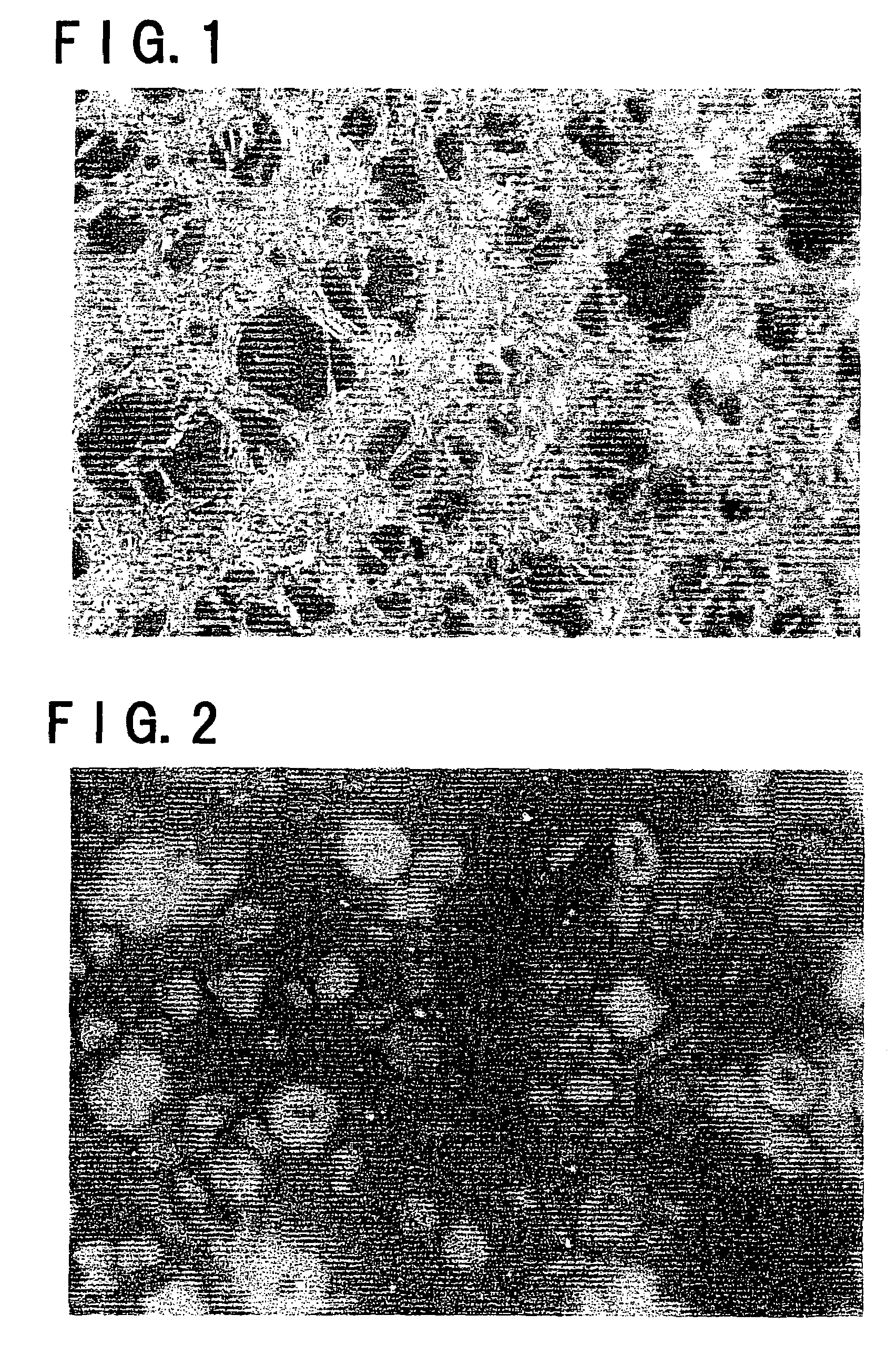Use of soluble cellulose derivative having been made hardly soluble in water and process for producing the same
a technology of soluble cellulose and cellulose, which is applied in the field of tissue-covering medical materials, can solve the problems of insufficient effect, risk of material itself being separated, and no example of carboxymethyl cellulose having been made hardly soluble in water, and achieves the effect of accelerating bone repair
- Summary
- Abstract
- Description
- Claims
- Application Information
AI Technical Summary
Benefits of technology
Problems solved by technology
Method used
Image
Examples
example 1
[0059]Sodium carboxymethyl cellulose having a 1% viscosity of from 150 to 250 mPa·s at 25° C. (etherification degree: 0.62-0.68, calculated molecular weight: 1.28×105−1.35×105 Da, manufactured by Dai-ichi Kogyo Seiyaku Co., Ltd.) was dissolved in distilled water so that it became 1 mass %. The pH of the aqueous solution thus prepared was adjusted to 1.5 with 1N nitric acid, and 15 ml of the acidic aqueous solution was put in a polystyrene container of 30 ml and placed in a freezer set at −20° C. It was left to stand for three days and then thawed at 25° C. Then, neutralization was carried out with water and a phosphate buffer having a concentration of 100 mM (pH 6.8) to obtain a spongy carboxymethyl cellulose having been made hardly soluble in water. This carboxymethyl cellulose having been made hardly soluble in water was freeze-dried to obtain a sheet containing about 1.5 mg / cm2.
example 2
[0060]The carboxymethyl cellulose used in Example 1 was admixed with 1N nitric acid at room temperature so that it became 20 mass %, and the admixture was preserved in a refrigerator of 4° C. for three days. Then, neutralization was carried out with water and a phosphate buffer having a concentration of 100 mM (pH 6.8) to obtain an agglomerated carboxymethyl cellulose having been made hardly soluble in water. This carboxymethyl cellulose having been made hardly soluble in water was rolled by applying a pressure of about 30 N / cm2 thereto, followed by drying at about 50° C. to obtain a film containing about 1.5 mg / cm2.
example 3
[0061]The carboxymethyl cellulose used in Example 1 was dissolved in distilled water so that it became 1 mass %. The pH of the aqueous solution thus prepared was adjusted to 1.0 with 1N nitric acid, and 3 l of the acidic aqueous solution was put in a container of 4 l and preserved in a refrigerator of 4° C. for 40 days. Deposited carboxymethyl cellulose having been made hardly soluble in water was recovered by centrifugal separation, and neutralization was carried out with water and a phosphate buffer having a concentration of 100 mM (pH 6.8) to obtain an agglomerated carboxymethyl cellulose having been made hardly soluble in water. This carboxymethyl cellulose having been made hardly soluble in water was suspended in physiological saline, followed by casting into a polystyrene container and drying at about 50° C. to obtain a film containing about 1.5 mg / cm2.
PUM
| Property | Measurement | Unit |
|---|---|---|
| molecular weight | aaaaa | aaaaa |
| thawing temperature | aaaaa | aaaaa |
| thawing temperature | aaaaa | aaaaa |
Abstract
Description
Claims
Application Information
 Login to View More
Login to View More - R&D
- Intellectual Property
- Life Sciences
- Materials
- Tech Scout
- Unparalleled Data Quality
- Higher Quality Content
- 60% Fewer Hallucinations
Browse by: Latest US Patents, China's latest patents, Technical Efficacy Thesaurus, Application Domain, Technology Topic, Popular Technical Reports.
© 2025 PatSnap. All rights reserved.Legal|Privacy policy|Modern Slavery Act Transparency Statement|Sitemap|About US| Contact US: help@patsnap.com

